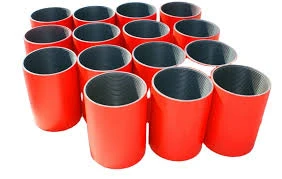- Afrikaans
- Albanian
- Amharic
- Arabic
- Armenian
- Azerbaijani
- Basque
- Belarusian
- Bengali
- Bosnian
- Bulgarian
- Catalan
- Cebuano
- Corsican
- Croatian
- Czech
- Danish
- Dutch
- English
- Esperanto
- Estonian
- Finnish
- French
- Frisian
- Galician
- Georgian
- German
- Greek
- Gujarati
- Haitian Creole
- hausa
- hawaiian
- Hebrew
- Hindi
- Miao
- Hungarian
- Icelandic
- igbo
- Indonesian
- irish
- Italian
- Japanese
- Javanese
- Kannada
- kazakh
- Khmer
- Rwandese
- Korean
- Kurdish
- Kyrgyz
- Lao
- Latin
- Latvian
- Lithuanian
- Luxembourgish
- Macedonian
- Malgashi
- Malay
- Malayalam
- Maltese
- Maori
- Marathi
- Mongolian
- Myanmar
- Nepali
- Norwegian
- Norwegian
- Occitan
- Pashto
- Persian
- Polish
- Portuguese
- Punjabi
- Romanian
- Russian
- Samoan
- Scottish Gaelic
- Serbian
- Sesotho
- Shona
- Sindhi
- Sinhala
- Slovak
- Slovenian
- Somali
- Spanish
- Sundanese
- Swahili
- Swedish
- Tagalog
- Tajik
- Tamil
- Tatar
- Telugu
- Thai
- Turkish
- Turkmen
- Ukrainian
- Urdu
- Uighur
- Uzbek
- Vietnamese
- Welsh
- Bantu
- Yiddish
- Yoruba
- Zulu
Vacuum Hose Connection Techniques for Automotive and Industrial Applications
Understanding Vacuum Hose Coupling A Comprehensive Guide
In the realm of automotive engineering, manufacturing, and various industrial applications, the vacuum hose coupling plays a pivotal role. These components ensure flexible and secure connections between various systems, primarily in vehicles and machinery, where the functionality of vacuum systems is vital. This article will delve into the intricacies of vacuum hose couplings, their types, applications, and maintenance tips.
What is a Vacuum Hose Coupling?
A vacuum hose coupling is a device used to connect two or more sections of vacuum hoses securely. It helps maintain a hermetic seal, allowing for efficient vacuum circulation without leakage. These couplings can typically withstand high pressure and temperature, making them essential in various applications, from automotive engines to industrial machinery.
Types of Vacuum Hose Couplings
Vacuum hose couplings come in various designs and materials, tailored to suit specific needs. Here are the most common types
1. Barbed Couplings These are perhaps the most widely used vacuum hose couplings. They feature multiple barbs or ridges, ensuring a tight grip on the hose. Barbed couplings are often used in applications where ease of installation and secure connections are paramount.
2. Flanged Couplings These couplings consist of two flanges that are bolted together. They provide a robust connection suitable for high-pressure applications and are commonly used in industrial settings.
3. Quick-Connect Couplings As the name suggests, these couplings allow for rapid attachment and detachment of hoses. They are particularly useful for applications that require frequent maintenance or adjustments.
4. Cam Lock Couplings Known for their ease of use, these couplings utilize a cam-and-groove mechanism to connect hoses. They are prevalent in fluid transfer applications where quick disengagement is necessary.
5. Compression Couplings These couplings are designed to join hoses by compressing the material around them, creating a tight seal. They are ideal for applications that require a more permanent connection without the need for additional clamps.
Applications of Vacuum Hose Couplings
Vacuum hose couplings have a wide array of applications across different industries
vacuum hose coupling

- Automotive Systems In vehicles, vacuum hoses are essential for operating various components, such as brake boosters, emissions systems, and HVAC controls. Properly functioning vacuum hose couplings ensure that these systems operate efficiently without leaks that could compromise safety and performance.
- Industrial Machinery In manufacturing settings, vacuum systems are utilized for material handling, food processing, and packaging. Proper hose couplings maintain the integrity of these systems, preventing contamination and ensuring product quality.
- Medical Equipment In healthcare, vacuum systems are crucial for various applications, including suction devices and laboratory equipment. Reliable hose couplings are essential to maintaining sterile environments.
Maintenance of Vacuum Hose Couplings
Ensuring the longevity and efficiency of vacuum hose couplings requires regular maintenance
1. Inspection Regularly check couplings for signs of wear, cracking, or corrosion. Any damaged components should be replaced immediately to prevent vacuum leaks.
2. Cleanliness Keep the connections clean and free from debris. Contaminants can lead to leakage and affect the performance of the entire vacuum system.
3. Proper Installation Ensure that couplings are installed correctly to avoid stress on the hoses, which can lead to premature failure.
4. Lubrication For couplings that require it, use the appropriate lubricant to ease the connection and disconnection process, especially for threaded types.
5. Pressure Testing Conduct periodic pressure tests to ensure that vacuum systems are operating within their specifications without leaks.
Conclusion
In summary, vacuum hose couplings are integral components in various systems, providing secure and reliable connections essential for optimal performance. By understanding the different types, applications, and maintenance strategies, individuals and organizations can enhance the efficiency and longevity of their vacuum systems. As industries continue to evolve, the importance of high-quality vacuum hose couplings will remain critical in ensuring operational safety and effectiveness.
-
Tubing Pup Joints: Essential Components for Oil and Gas OperationsNewsJul.10,2025
-
Pup Joints: Essential Components for Reliable Drilling OperationsNewsJul.10,2025
-
Pipe Couplings: Connecting Your World EfficientlyNewsJul.10,2025
-
Mastering Oilfield Operations with Quality Tubing and CasingNewsJul.10,2025
-
High-Quality Casing Couplings for Every NeedNewsJul.10,2025
-
Boost Your Drilling Efficiency with Premium Crossover Tools & Seating NipplesNewsJul.10,2025







